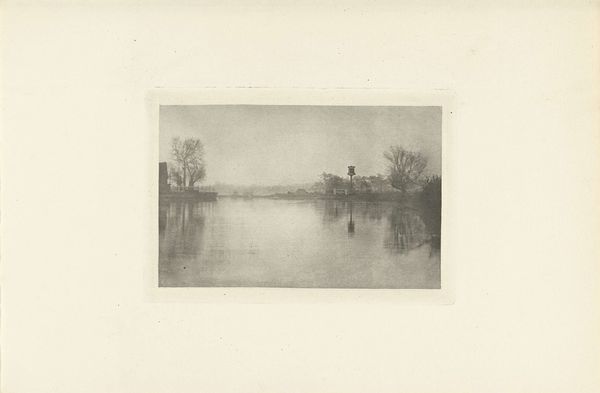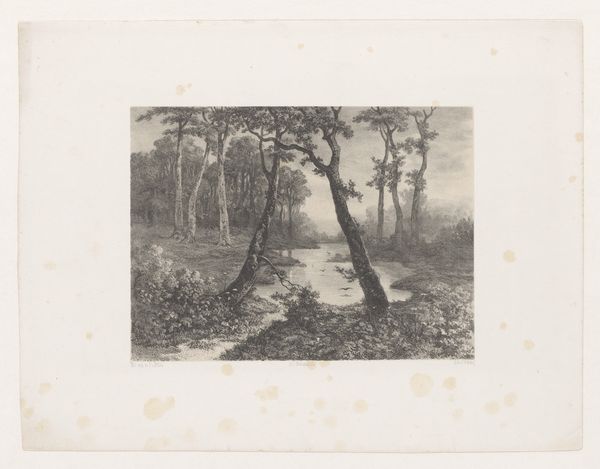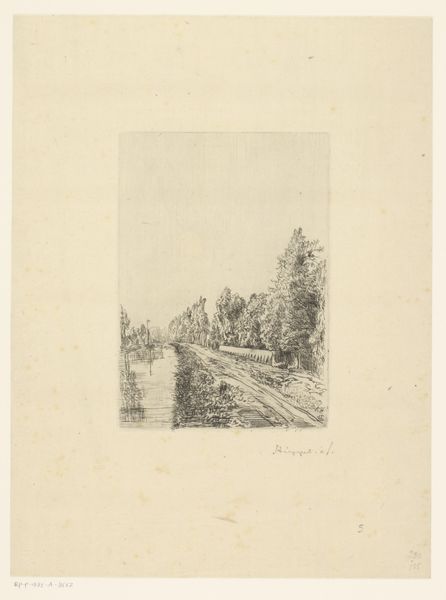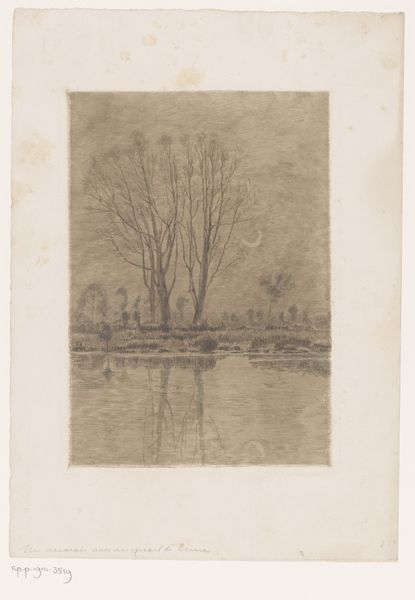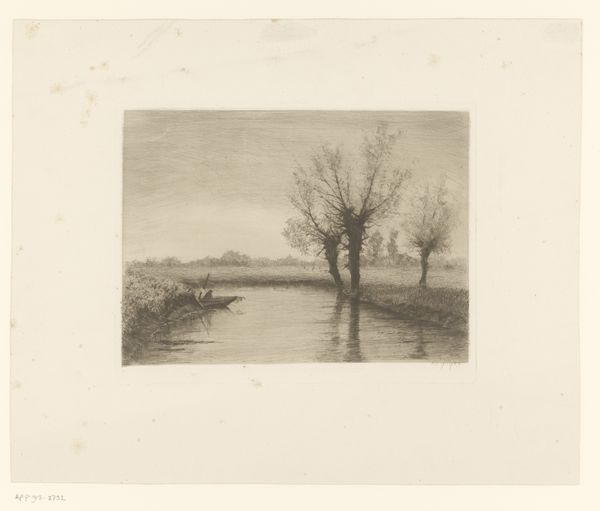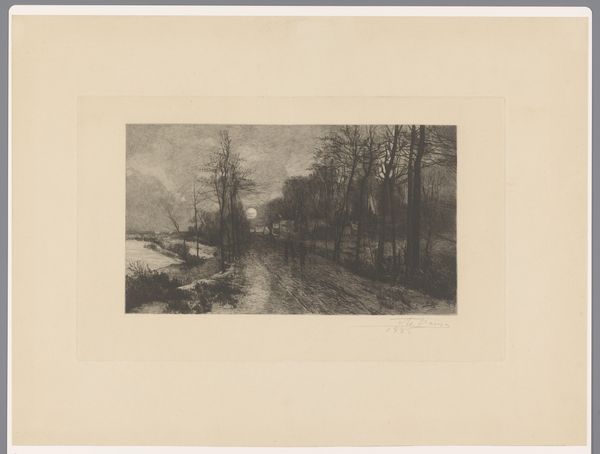
Roeiboten en een zwemmer, Meramec rivier, tijdens de wereldtentoonstelling in St. Louis (Louisiana Purchase Exposition), 1904 1904
0:00
0:00
Dimensions: height 73 mm, width 101 mm
Copyright: Rijks Museum: Open Domain
Curator: Let’s consider this gelatin silver print now on view: it's by Jan Schüller, titled "Rowboats and a Swimmer, Meramec River, During the World's Fair in St. Louis," taken in 1904. Editor: My first impression is a feeling of faded nostalgia, a calm summer scene captured through a veil of time. The tones are soft, almost dreamlike. Curator: Precisely, and it’s crucial to remember this image emerges during a period marked by rapid industrialization, mass migration, and burgeoning imperial ambition, particularly visible at events like the Louisiana Purchase Exposition or World's Fair depicted here. What narratives does this selection of Schuller tell us? Editor: On one hand, the photograph suggests an escape from such urban-industrial realities; figures engage in leisurely water activities far removed from labor disputes or global power plays. Yet, situating this image within Schuller's wider oeuvre is revealing. Was he part of any movements engaging marginalized communities or anti-imperial dialogues occurring amidst this same landscape? The photographic impression appears quite selective, almost obscuring anything except peaceful recreation, while ignoring the broader social tensions prevalent during this period. Curator: I would suggest the choice itself can be read as a political act, as photography, historically and socially, served various ends, whether promoting particular agendas, representing scientific documentation, or framing public events according to prescribed ideals, even those presented at world fairs like the Louisiana Purchase Exposition in Saint Louis. Schüller's choice to photograph rowboats implies an appeal to shared public leisure amidst a celebration of consumerist values. What did this recreational time mean in relation to work practices and evolving understandings about class privilege and distribution? Editor: And thinking about that, the image may then also perpetuate idealized narratives of public experience intended for universal participation yet likely determined according socio-economic barriers still quite in place during the early 20th century? Does it reflect or confront limitations of accessibility when "all" might attend yet social disparities often impacted daily mobility? Curator: Exactly. I suppose thinking critically reminds that visual records from events as vast as world fairs, like still photography such as this, necessitate constant reevaluation and context since public spectacles rarely if ever show total truths regarding social experiences. Editor: Considering Schuller’s serene landscape from a position rooted in both historical understanding alongside broader political discourse—a crucial moment of contemplation. Curator: Yes, these dialogues show the ongoing dialogue that help guide a better public understanding about how pictures matter and how those meanings are always fluctuating and relative according different standpoints.
Comments
No comments
Be the first to comment and join the conversation on the ultimate creative platform.

